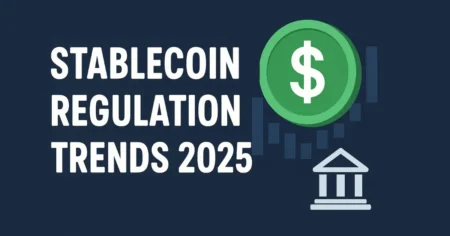Crypto market analysis
Market Trends and Cycles in Crypto
Bull and Bear Markets – Recognizing the Cycle
If you’ve been even mildly interested in crypto, you’ve heard the terms “bull” and “bear” thrown around. These aren’t just fun labels — they describe critical phases in the market cycle. A bull market refers to a period where prices are rising or are expected to increase. Optimism is high, investors are enthusiastic, and projects see growth. Conversely, a bear market is when prices fall, fear spreads, and even solid projects struggle to gain traction.
One of the key things about crypto is that it’s cyclical. These cycles often revolve around major events, such as Bitcoin halvings, which reduce the number of new coins entering circulation. Historically, this has led to scarcity, driving prices upward, sparking bull runs. After these euphoric peaks, corrections and prolonged bear phases typically follow.
Understanding these market cycles helps traders and investors make better timing decisions. Rather than jumping in during hype-fueled tops, savvy investors accumulate during the dips and ride the next wave upward. Market psychology plays a big role here: fear of missing out (FOMO) fuels bull markets, while fear, uncertainty, and doubt (FUD) dominate the bears.
Seasonal Trends and Historical Patterns
Crypto doesn’t just operate in long cycles — it also shows seasonal patterns. For example, Q4 (October–December) has historically been a strong quarter, especially for Bitcoin. Many believe this is linked to year-end institutional allocations and retail excitement during the holiday season. On the other hand, September has often been a weak month due to profit-taking or negative macroeconomic sentiment.
Analyzing historical price movements helps traders anticipate what might come next. While past performance isn’t a guarantee of future results, history tends to rhyme in the crypto world.
So, savvy investors always combine macro market trends with historical price behavior to build better strategies. Tools like CoinMarketCap or TradingView help visualize these patterns and make more data-driven decisions.
On-Chain Metrics and Their Role in Crypto Analysis
What Are On-Chain Metrics?
On-chain metrics offer a unique advantage that traditional markets lack — public blockchain data. You can track everything from wallet activity, transaction volume, token distribution, gas fees, and more. These metrics help understand the health of a network, user behavior, and potential market movements.
For instance, active addresses tell you how many people are using a cryptocurrency. A rising number suggests adoption and increased utility. Similarly, transaction count and value indicate how much a coin is being moved, which can correlate with demand.
Key On-Chain Indicators You Should Know
- NVT Ratio (Network Value to Transactions): Think of it like a P/E ratio in stocks. It compares the value of the network to the volume of transactions. A high NVT might suggest overvaluation.
- Hash Rate: For proof-of-work coins like Bitcoin, a rising hash rate signals a strong, secure network. A falling one might indicate miner capitulation or declining confidence.
- Exchange Inflows and Outflows: When large amounts of crypto move into exchanges, it can signal upcoming sell pressure. Outflows, on the other hand, often mean accumulation and long-term holding.
H3: How to Use On-Chain Data in Your Strategy
Smart investors use on-chain metrics to spot early trends. For example, if Bitcoin is being moved off exchanges in large volumes, it could signal accumulation by institutions or whales. That’s often a bullish indicator.
Tools like Glassnode, CryptoQuant, and IntoTheBlock are goldmines for this kind of data. And guess what? Most of them offer free tiers with enough information to get started.
The bottom line is: If you want to go beyond price charts, on-chain data gives you the inside scoop on what’s happening under the hood.
Macroeconomic Factors Influencing Crypto
The Role of Inflation, Interest Rates, and the Fed
Cryptocurrencies don’t exist in a vacuum. They are deeply affected by global economic trends — especially things like inflation, interest rates, and central bank policies.
When inflation is high, investors often look for assets that can act as a hedge, like Bitcoin. That’s part of why BTC is sometimes called “digital gold.” But there’s a flip side: when central banks raise interest rates to fight inflation, it makes riskier assets (like crypto) less appealing.
The Federal Reserve in the U.S. has a significant influence here. When the Fed tightens its policy (raising interest rates), capital tends to flow out of volatile markets. Looser monetary policy, on the other hand, tends to benefit crypto as it pumps more liquidity into the system.
Global Events and Geopolitical Risks
Think crypto isn’t affected by politics or global unrest? Think again.
Events like wars, trade disputes, pandemics, and even regulatory crackdowns can send ripples through the crypto market. For example, when Russia invaded Ukraine, Bitcoin’s role as a neutral, censorship-resistant asset became more evident, pushing demand up in some regions.
Similarly, when China banned crypto mining, the market briefly panicked — but that also led to a decentralization of Bitcoin mining across the globe.
The point is: savvy market watchers keep one eye on global news and the other on their crypto charts.
Crypto Regulations and Their Market Impact
The Evolving Legal Landscape
Crypto regulation is like shifting sand — different from country to country, and constantly changing. Some countries like El Salvador embraced Bitcoin as legal tender, while others like China have gone the opposite direction with full-scale bans.
In the U.S., the debate continues around whether cryptocurrencies are securities, commodities, or something else entirely. The SEC’s lawsuits against Ripple, Coinbase, and Binance have had major impacts on market sentiment.
Regulatory clarity — or the lack thereof — is often a key market mover. A positive ruling can fuel price rallies, while fear of heavy regulation can cause sell-offs.
Staying Ahead of Regulatory Changes
So, how do you stay informed?
Follow crypto-focused legal analysts and commentators on X (formerly Twitter).
Subscribe to newsletters like The Block, CoinDesk, or Crypto Briefing.
Use tools like Messari for project-specific compliance insights.
Being ahead of the regulatory curve isn’t just about compliance — it’s also a way to gain an edge. Investors who understand the legal risks and opportunities are better equipped to manage their portfolios.
Risk Management Strategies in the Crypto Market
Why Risk Management is Crucial in Crypto
The crypto market is infamous for its volatility. It’s not uncommon to see prices swing by double digits within a single day. While this opens doors for high returns, it also increases the risk of significant losses. That’s why risk management isn’t just optional — it’s essential.
Many new traders get swept up in the hype, investing more than they can afford to lose. Others fall victim to FOMO and buy at the top, only to panic sell when prices crash. Without a solid risk management strategy, even the most promising portfolio can turn into a disaster.
Practicing discipline and control over your investments is the first step to long-term success. This involves setting clear rules for your trades, knowing when to enter and exit, and most importantly, knowing how much you’re willing to lose.
Key Risk Management Techniques
Here are some proven techniques every crypto investor should apply:
- Position Sizing: Never put all your eggs in one basket. Allocate only a portion of your portfolio to a single asset. A good rule of thumb? Don’t risk more than 1–2% of your capital on a single trade.
- Stop-Loss Orders: These are automated instructions to sell your asset if it falls to a certain price. It’s your safety net to prevent catastrophic losses during sharp downturns.
- Diversification: Spread your investments across different crypto assets (BTC, ETH, DeFi tokens, stablecoins). This helps cushion the impact of one asset’s poor performance.
- Taking Profits: Don’t get greedy. Set take-profit levels to secure gains during bull runs. Remember, unrealized profits can vanish fast in crypto.
- Avoid Leverage (Especially if You’re New): Leverage trading can multiply your profits, but it also amplifies your losses. It’s a double-edged sword — one best left to experienced traders.
- The takeaway here is simple: treat your crypto investments like a business. Make calculated decisions, control your emotions, and always have a backup plan.
Tools and Platforms for Crypto Market Analysis
Essential Analytical Tools for Traders and Investors
To thrive in crypto, you need the right tools — not just your gut feeling. Fortunately, there are dozens of platforms offering real-time data, analytics, and insights.
Here’s a list of some must-have tools:
- CoinMarketCap / CoinGecko: Ideal for tracking prices, market caps, volume, and rankings of thousands of cryptocurrencies.
- TradingView: A favorite among chartists. It offers interactive charts and hundreds of technical indicators.
- Glassnode: Provides on-chain data analysis for major cryptocurrencies. You can track wallet activity, inflows/outflows, miner behavior, and more.
- CryptoQuant: Similar to Glassnode but with more emphasis on exchange data and whale movements.
- Santiment: Focuses on social sentiment analysis, developer activity, and on-chain metrics.
- Messari: Excellent for deep dives into specific projects, including their tokenomics, roadmaps, and team background.
Each of these tools serves a specific purpose. Whether you’re a short-term trader or a long-term investor, combining these platforms helps you make smarter, data-backed decisions.
How to Choose the Right Platform
Not every tool fits everyone’s needs. If you’re just starting, CoinMarketCap and TradingView are user-friendly and free. For more in-depth data, platforms like Glassnode or CryptoQuant offer free plans, but you may need to upgrade for full access.
When selecting tools, consider the following:
- Ease of use: Does the platform have a clean interface?
- Accuracy: How reliable is the data?
- Feature set: Does it offer the specific insights you need (social sentiment, whale alerts, DeFi tracking)?
- Cost: Is the free plan enough for your needs, or will you need a subscription?
In short, don’t rely on a single source. Use a combination of tools to cross-verify information and uncover hidden opportunities in the market.
Common Mistakes to Avoid in Crypto Market Analysis
Blindly Following Influencers and Hype
One of the biggest traps new investors fall into is blindly trusting social media influencers or YouTube “experts” without doing their research. While it’s great to gather opinions, it’s risky to act solely based on someone else’s conviction.
Crypto influencers often have vested interests. They may promote a project they’ve been paid to endorse or have already bought into before hyping it up. By the time you jump in, they’re already preparing to cash out.
The lesson? Use influencers as a starting point, not your entire strategy. Always cross-check with independent research and data.
Overtrading and Chasing Losses
Crypto markets are 24/7, which tempts many traders to be constantly active. But more trades don’t equal more profits. Overtrading usually leads to emotional decisions, higher fees, and greater exposure to mistakes.
Another bad habit is chasing losses — trying to recover losses by making impulsive, high-risk trades. This often leads to a downward spiral of even more losses.
Discipline and patience are key. Set clear strategies and stick to them. Accept that losses are part of the game, and learn from them rather than trying to “win it all back” instantly.
Ignoring the Bigger Picture
Many traders focus too much on short-term price movements and forget the broader trends. While it’s tempting to trade every 5% movement, it’s often better to zoom out.
Ask yourself:
- Is the project fundamentally strong?
- Is the market in a bullish or bearish phase?
- Are macroeconomic factors aligning with your position?
Short-term trades can be exciting, but long-term thinking is where real wealth is built in crypto.
Developing Your Crypto Analysis Strategy
Combining Fundamentals, Technicals, and Sentiment
A winning crypto strategy blends all the major forms of analysis:
- Fundamental Analysis helps you choose the right assets.
- Technical Analysis helps you time your entries and exits.
- Sentiment Analysis helps you understand the mood of the market.
Let’s say you find a strong altcoin with a solid whitepaper and active community (fundamentals), you notice a bullish breakout pattern (technicals), and see positive buzz on Twitter and Reddit (sentiment). That’s a triple confirmation and a potentially powerful setup.
Conversely, if any of the three are weak — maybe the sentiment is turning sour or the technicals show overbought conditions — it’s a signal to tread carefully.
Building Your Routine
Set aside time each day or week to review your crypto portfolio and market conditions. Your routine could look something like this:
- Morning: Check major news headlines and macro trends.
- Afternoon: Analyze charts and on-chain metrics.
- Evening: Review sentiment indicators and social media trends.
Creating a regular workflow keeps you informed and helps you stay ahead of market changes.
The best traders don’t just react — they plan. So build a system, stick to it, and refine it over time.
The Future of Crypto Market Analysis
AI and Machine Learning in Crypto Analysis
The future of crypto market analysis is being shaped by artificial intelligence (AI) and machine learning (ML). These technologies can process vast amounts of data, recognize patterns, and even make predictions based on historical trends — all much faster than a human ever could.
Platforms are already using AI to:
- Predict price trends using neural networks
- Scan social media to gauge market sentiment in real-time
- Identify arbitrage opportunities across different exchanges
- Detect unusual activity that could signal pump-and-dump schemes or whale movements
Machine learning models improve as they consume more data. Over time, they become better at identifying which signals are most reliable — helping investors make more informed decisions.
But here’s the key: AI is a tool, not a guarantee. No system can predict crypto markets with 100% accuracy. Use AI and ML as part of a broader strategy, not as a magic solution.
Decentralized Analytics and Community Tools
Another future-forward trend is the rise of decentralized analytics platforms. These are built on blockchain technology themselves and often governed by user communities. Tools like Dune Analytics and The Graph allow users to create custom dashboards and queries using blockchain data directly.
This democratizes access to analytics. Instead of relying solely on centralized companies or institutions, anyone can build, share, and benefit from insights in an open, collaborative way.
The rise of Web3-based analytics will continue as the ecosystem grows. These platforms offer transparency, flexibility, and are often free or incentivized through tokens — a win-win for retail traders and developers alike.
Conclusion – Navigating the Crypto Market with Confidence
Crypto market analysis is both an art and a science. It’s fast-paced, constantly evolving, and can be overwhelming — but it’s also incredibly rewarding for those who take the time to learn it properly.
Whether you’re looking to make your first investment or you’re already trading actively, mastering crypto analysis will help you:
- Spot better opportunities
- Avoid common pitfalls
- Time your entries and exits more effectively
- Make data-driven, emotion-free decisions
Here’s a quick recap of what you’ve learned:
The crypto market is driven by a unique mix of technology, sentiment, and macroeconomics.
Analysis methods include fundamentals, technicals, sentiment, and on-chain data.
Risk management, proper tools, and avoiding common mistakes are key to long-term success.
The future of analysis lies in AI, decentralized tools, and data transparency.
The best way to improve is through practice. Start applying what you’ve learned today — review charts, read whitepapers, track whale movements, experiment with sentiment tools, and never stop learning.
Remember: in crypto, knowledge isn’t just power — it’s profit.
FAQs
Q1: What’s the best strategy for a beginner in crypto analysis?
Start with fundamental analysis to understand the project’s value, use basic technical indicators like RSI and MACD, and always manage your risk by diversifying and using stop-losses.
Q2: How often should I do a market analysis?
For active traders, daily analysis is crucial. Long-term investors can get by with weekly reviews, but staying updated on major news and trends is important regardless of your trading frequency.
Q3: Are paid crypto analysis tools worth it?
Yes, if you’re a serious trader or investor. Free tools are great for beginners, but paid versions of platforms like Glassnode or TradingView offer deeper insights and better data access.
Q4: How reliable are crypto influencers and YouTube analysts?
Take their insights with a grain of salt. Some offer value, but many have hidden agendas or lack proper analysis skills. Always verify information with independent research.
Q5: Can I make money just by following crypto market trends?
Yes, but it’s risky without proper analysis and discipline. Following trends blindly without understanding underlying metrics often leads to poor timing and losses.
Also, read
- What is a crypto wallet, and how does it work? – Coinsify
- 10 Crypto Terms Every Beginner Must Know: Coinsify
- What is blockchain technology? Complete Guide – Coinsify
- How to Buy Crypto Safely in 2025: Complete Guide – Coinsify
- Bitcoin vs Ethereum: Key Differences Explained: Complete Guide
- Ultimate Blockchain Glossary: Learn Blockchain Terms Easily
- How to Buy Bitcoin Safely (Complete Beginner’s Guide)
- Top 10 Crypto Wallets for Beginners (2025 Edition)
- What is cryptocurrency? A Beginner-Friendly Guide (2025)






